Fanny Richard, instilling life into clay
After her studies in textile design at Olivier de Serre and Duperret, Fanny Richard discovered the mineral world: the clay. It was love at first sight – or, better said, love at first touch. In October 2010, she decided to embark on an independent journey, creating her own ceramic studio and brand, Yfna.
Halfway between artist and artisan or, on the contrary, both artist and artisan, she defends the nobility of the Hand and the tight fusion between Thinking and Making. If her hands give shape, then her emotions infuse the clay with life.
In the cosy and fertile environment of her atelier, among dormant lumps of porcelain and grit, where batches of objects were patiently waiting for the oven while others were shining under their brand new enamel coating, Fanny talked about her relationship with the matter, about the artist and artisan dilemma, about her independence and the act of creation.
Discover hereafter the rich dialogue with Fanny Richard.
The matter
How did the transition from textiles to clay happen?
Textile design is about using colours, fabrics, surfaces, motifs, and patterns to create a universe. By switching from fabrics to clay I haven’t changed what I do: I’ve only changed the material I work with. Today I’m a ceramicist, maybe tomorrow I’ll be basket-maker or metallurgist… All the materials have something to say, the point is to make them talk.
You met the clay more than 8 years ago and you haven’t changed it for something else. Is there something special about moulding the earth?
The encounter with the clay happened during my degree in textile design. When I felt the earth in my hands, I touched something that made me vibrate. It is polyvalent, rich, surprising… I’m not sure that I’ll be able to switch to another material one day. Nevertheless, it is also highly exigent and requires big commitment.
What exactly does the clay demand from you?
Opening the oven is always a moment of grace and humbleness – the humbleness of admitting that “it’s not at all what I thought it would be”. It’s also a moment of welcoming the hazard and the accident through some mysterious ways, and this is fantastic. Accident always requires to bounce back and learn something new.
What do you learn from working with the clay?
Pottery is about patience. It teaches you to be really patient. For me, someone rather agog, it’s like a therapy… This métier teaches you to be humble in front of a complex substance that blends the elements together: earth, water, fire, air. All the elements are present and each of them will leave its mark. If I don’t give them enough room to express themselves, if I want to control everything, I’ll just smother the spark, the life inside it. In that case, it won’t be a dance, but a fight. And who wants to fight with the elements? It’s better to dance with them!
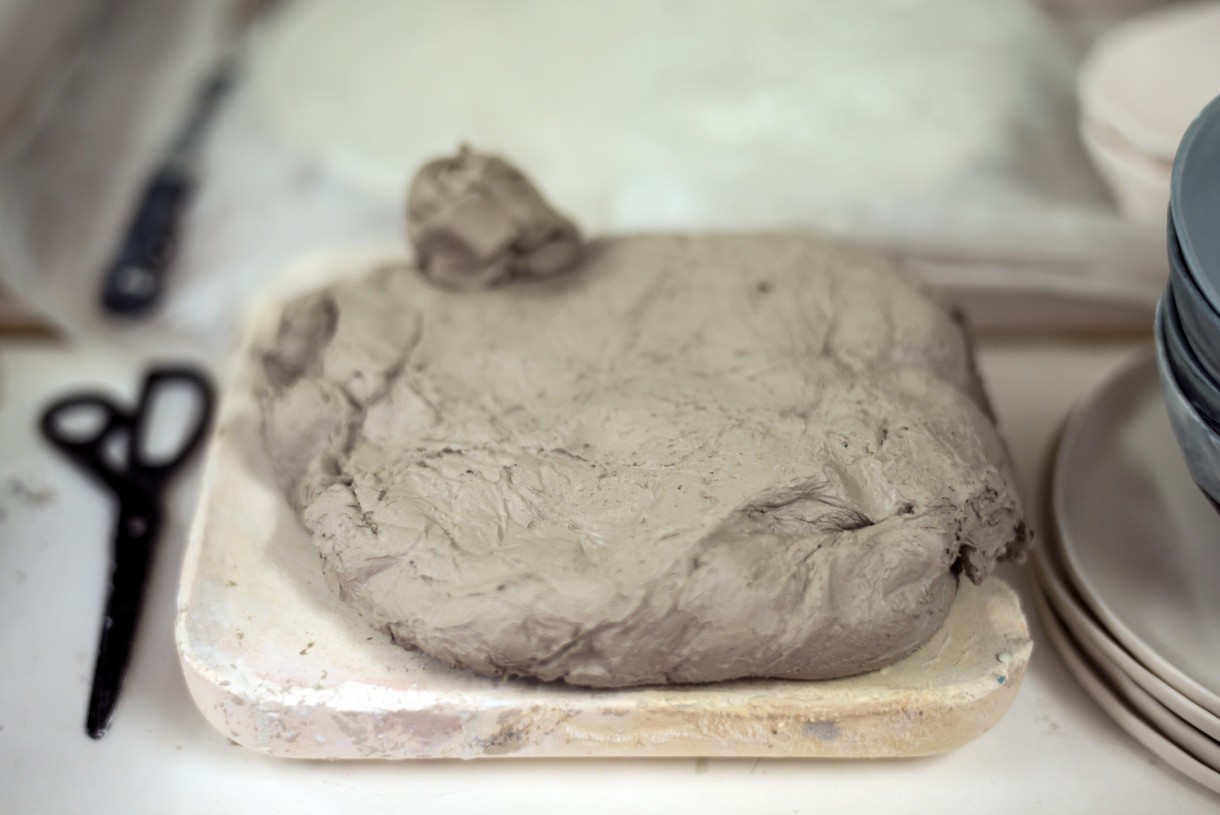
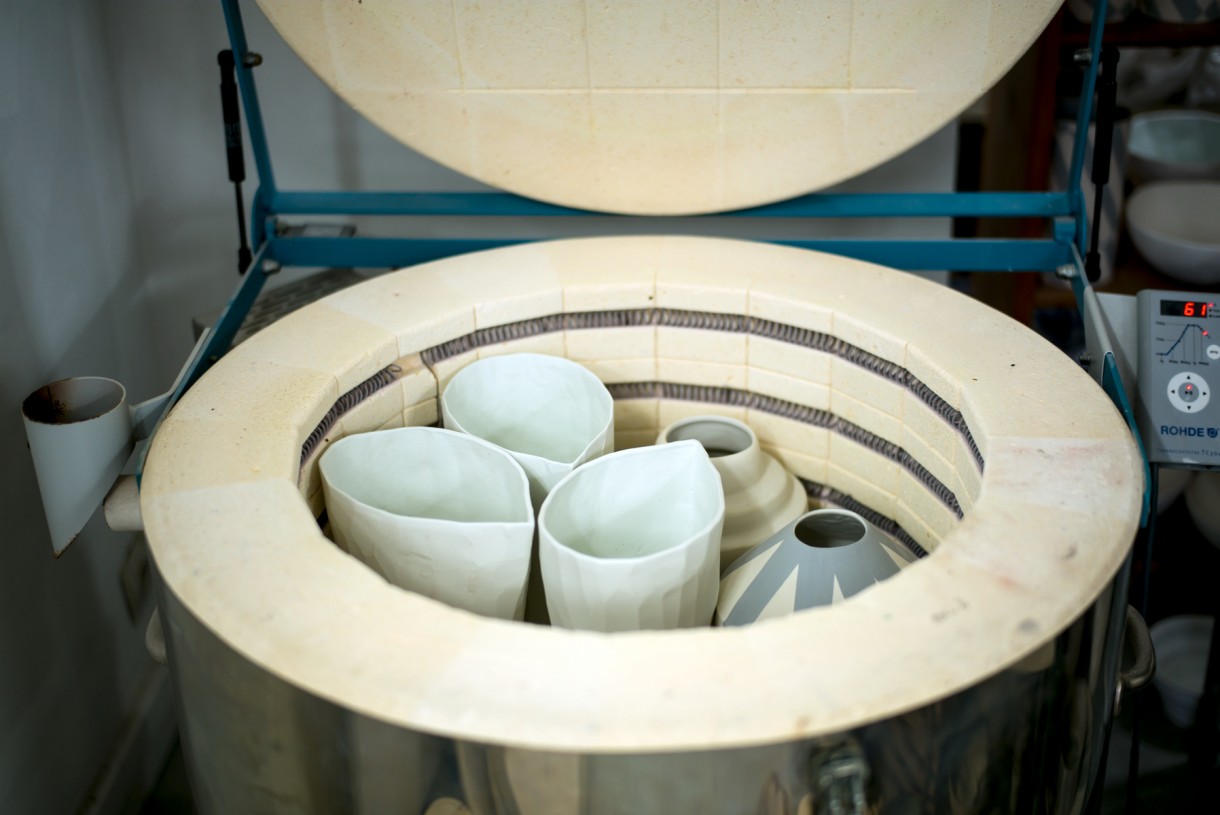

The métier
How hard is it to be a ceramicist in France, today?
There have always been some old battles in France between fine arts and applied arts, object of art and visual object, thinking and making, brain and hand, artist and artisan, design and craftsmanship… But it’s like dissociating the body and the mind in medicine: it’s not even an issue!
This is quite paradoxical, as I can’t really see how someone can think without making or make something without thinking. Both of them, once they work in tandem, can create something balanced and harmonious.
We have the right to think and to make, to be artist and artisan simultaneously. We are entitled to be what whatever we want to be.
Artist or Artisan?
From a militating point of view, I consider myself an artisan. Even more: artisane, to add also a feminist twist.
There’s a senseless dissension about the nobility of making, the nobility of the hand, which are often undermined. It’s in fact a question that followed me throughout my studies, but in the end I realized it was a fake debate. The purpose wasn’t to find the answer to this question, but to find myself. When someone asks “Are you an artist or an artisan?”, I like to say “I let you choose, the label that doesn’t really matter for me”.
Of course, if I take a closer look at some aspects of my work, I’m more of an artisan while other works pertain to an artistic side. From one project to another, I want to say different things, I can have different approaches, the constraints and the emotional filters can vary. But what is constantly present into everything I do is that all my creations carry a piece of me, the speck of an emotion that I wish to convey. The key is there: sharing (or at least trying to share) a universal emotion.
Where do your emotions come from?
In what I do, they often come from the surrounding environment, from nature, but not necessarily a global nature. It may be something micro: a certain light, the colour of a tiny leaf, a minuscule detail that makes me feel something… and from this emotion, I feel alive, and from this vivacity that invades me, I feel the urge to share it and trigger the same emotion in someone else. I want to feel that the humanity I feel inside me is in all of us. My work is a way to relay primeval emotions, immanent to all human beings.
What gives you the feeling of accomplishment?
Just like the moment of opening the oven, this is rather a mystery. Shaping the clay is a journey that needs to be taken with all the heart. I feel fulfilled when I’m just, spot-on, when the result is faithful to what I felt and to what I wanted others to feel at a very moment. But I couldn’t explain how all of this happens, it’s rather a mystery…
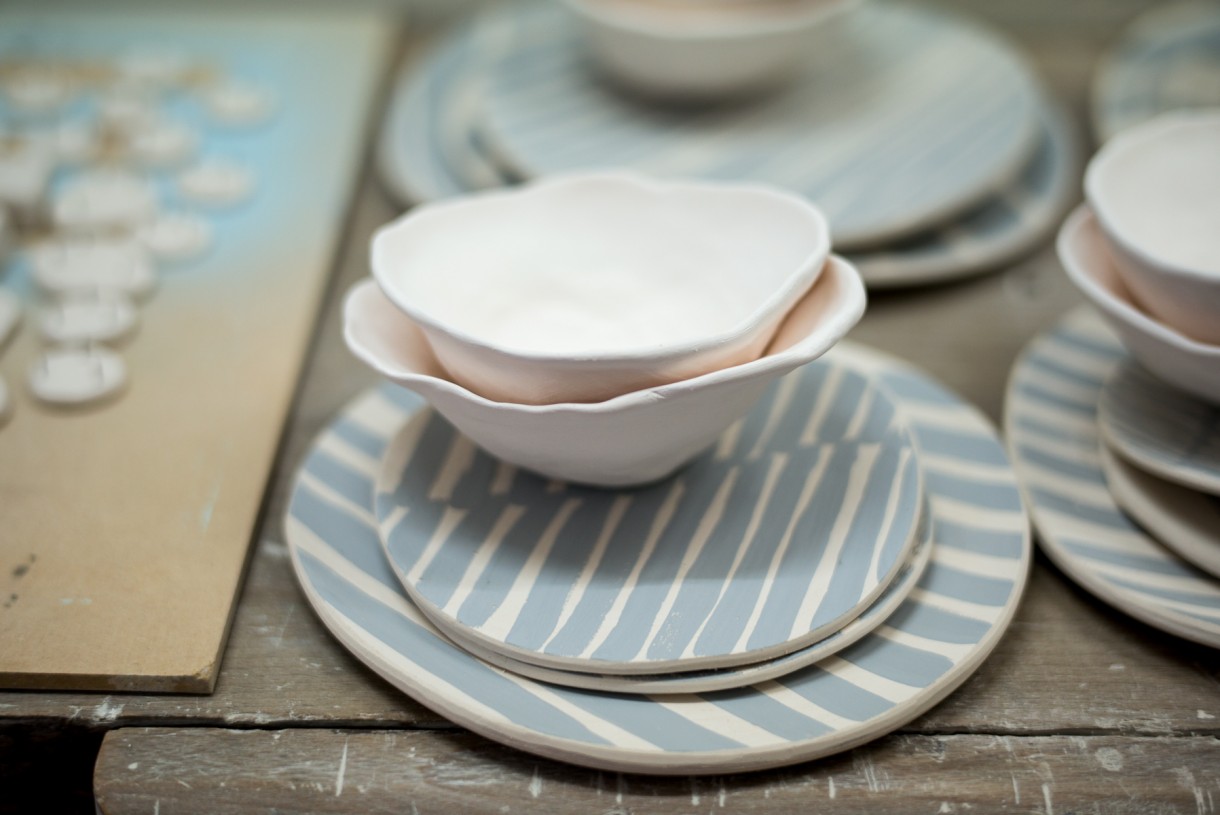

The independence
How did you decide to lead an independent career?
I have never worked for large companies because that would have compelled me to choose between thinking and making. As I neither could nor wanted to dissociate the two, this naturally led me to an independent life.
What if a large pottery company would propose you a job that you couldn’t normally refuse, like being the global head of creation, what would you do?
I already know the answer: I would decline the offer. Freedom, once you know its taste, you can’t have enough of it. Even if the price to pay is big, it’s just too precious.
What is the price of independence?
Being a Shiva: you need ten arms, ten heads, fifteen feet, you can never stop, you’re always connected to the need of existing and creating, managing financial records and bills, generating cash flow, managing communication…
Which are the ups and downs of independence?
The ups: the freedom to make mistakes. The downs: the freedom to make mistakes :). There is so much to deal with.
The act of creation
Singular object vs. serial object?
From business considerations, I sometimes have to be able to produce collections of objects – personally, I prefer the word “family” to “collection”. But even if I create several similar objects, despite the fact that they are all shaped out of the same clay and the same mould, each of them is singular. Of course, I use moulds, but it’s not for mechanically replicating the same thing: it’s for watching in awe how shapes and volumes coming from the same matrix, from the same mother after all, can grow so unique! It’s a wonderful feeling! It’s also the strongest emotion that I wish to instil in my creations: that each of them can find it’s uniqueness.
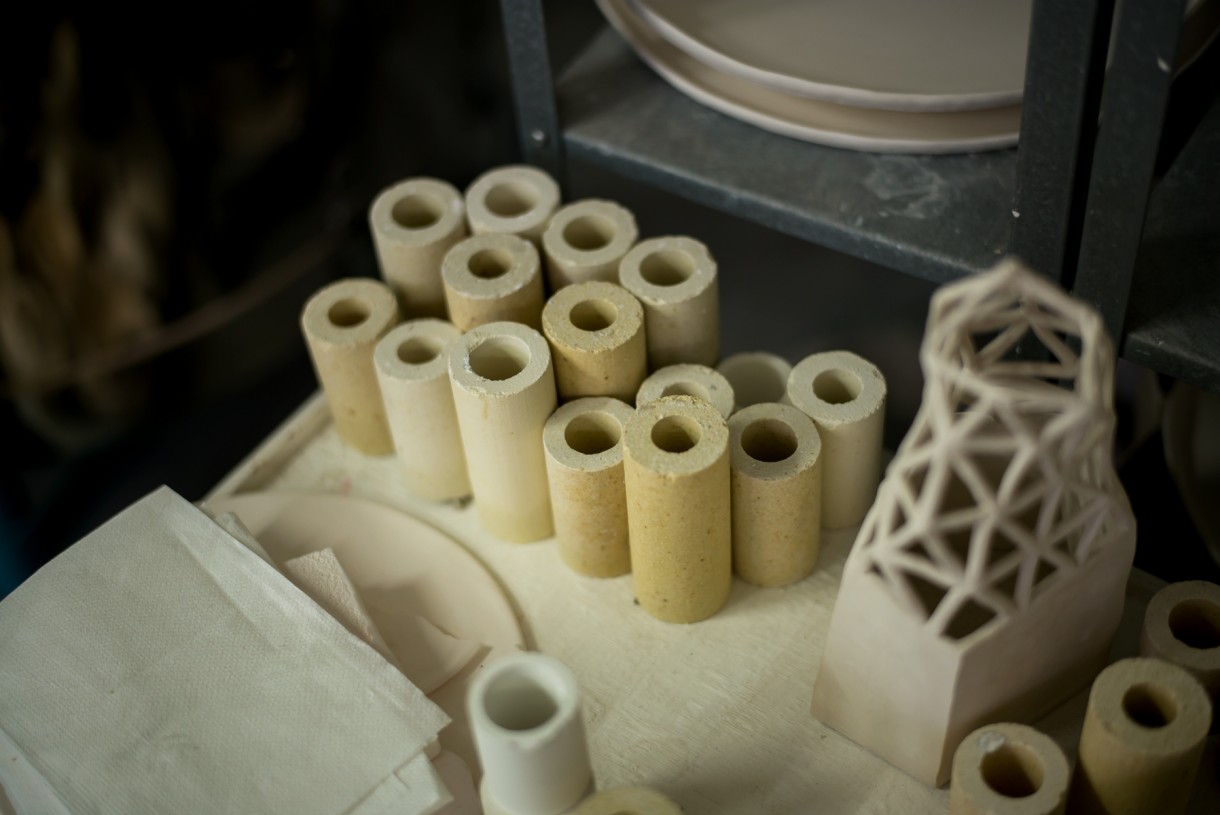
What do you wish to achieve through your work?
The artisanal object is crafted by the hand, is the fruit of someone’s emotions and mood at a very moment. The way an object touches us is always about ourselves: it reflects who we are and what we are made of. Sometimes it’s intimate, sometimes it’s disturbing, unsettling… either way, this is exactly why it is so precious! Because it triggers something that talks about one’s depths and innermost feelings. If I can provide people with the tools to meet themselves through my work, to help them make the journey towards self, that’s perfect.
Beyond the emotional part, how important is the technique?
You don’t necessarily have to be a pottery virtuoso to convey genuine, strong emotions. Of course, if technique can prevent you from saying something, learn it, master it, but never as a means of legitimation. An artist or artisan who hides behind technique does that by fear of feeling raw or fleshy emotions, by fear of the material part, of the living and mortal… at the end of the day, the object empty of emotions is dead and worthless. But then, it isn’t always easy to feel and be alive!
Which are your artistic inspirations?
Many of Guiseppe Penone’s creations move me very deeply. Although I saw one of Gina Pane’s exhibitions years ago, her work is still disturbing me, questioning me, almost aggressing me and I’m still wondering where do those emotions come from… I think a lot about her work. I am also fond of Matisse’s vegetal drawings. I realize I’m often attracted to drawings and to unusual artistic approaches.
How does the conception phase happen?
It’s meteoric. It sprouts inside me for some time, then is comes out like a lightning. Once it’s there, I will look at it and I will know precisely where it comes from – but once it’s there. Although I feel when an idea is growing inside me, I need to see it before I can explain it or define it. Most of the stories that I’m bubbling with come from emotions that I wanted to recreate and share at a specific moment.
How important is people's acclaim?
I’m not trying to please people through my creations. It all comes down to a basic personal principle: give yourself enough love so that you can share it with others, too. If we don’t love ourselves enough, we’ll seek to fill this void from the outside, looking for someone else’s love and appreciation. In this métier, it’s the same: put enough love in what you do and be kind to yourself; this is the only way you can be kind to others, even with those who dislike your work.
Above any aesthetic criteria, what really matters to me is being spot-on. Beautiful, not beautiful, people have the right to think what they want. I will welcome any reaction and I can accept that my work can fail to touch someone.
Just one word to define the essence of your work?
ALIVE.

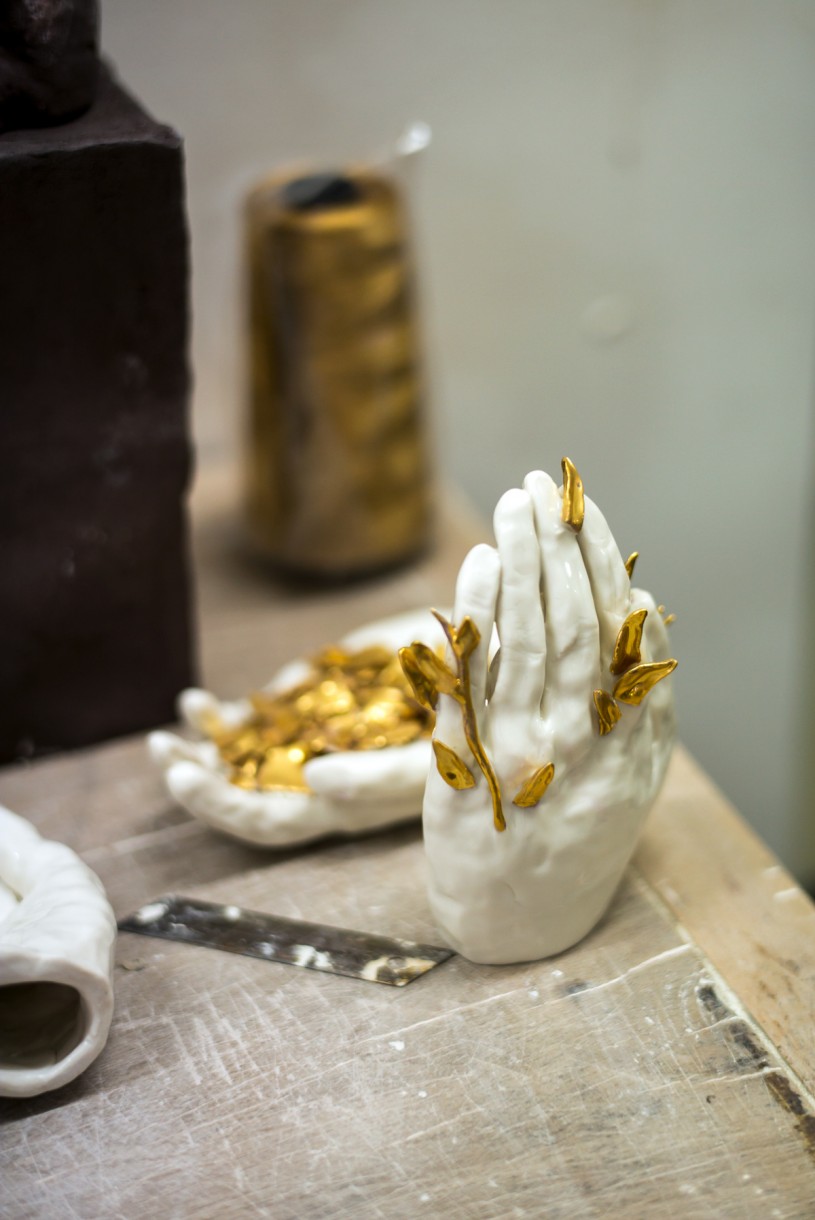
External link: Fanny Richard's Website.
Images and interview realized in French by Faurar in Fanny Richard's workshop (23 Rue Pasteur, Pantin), December 2017.
© Faurar